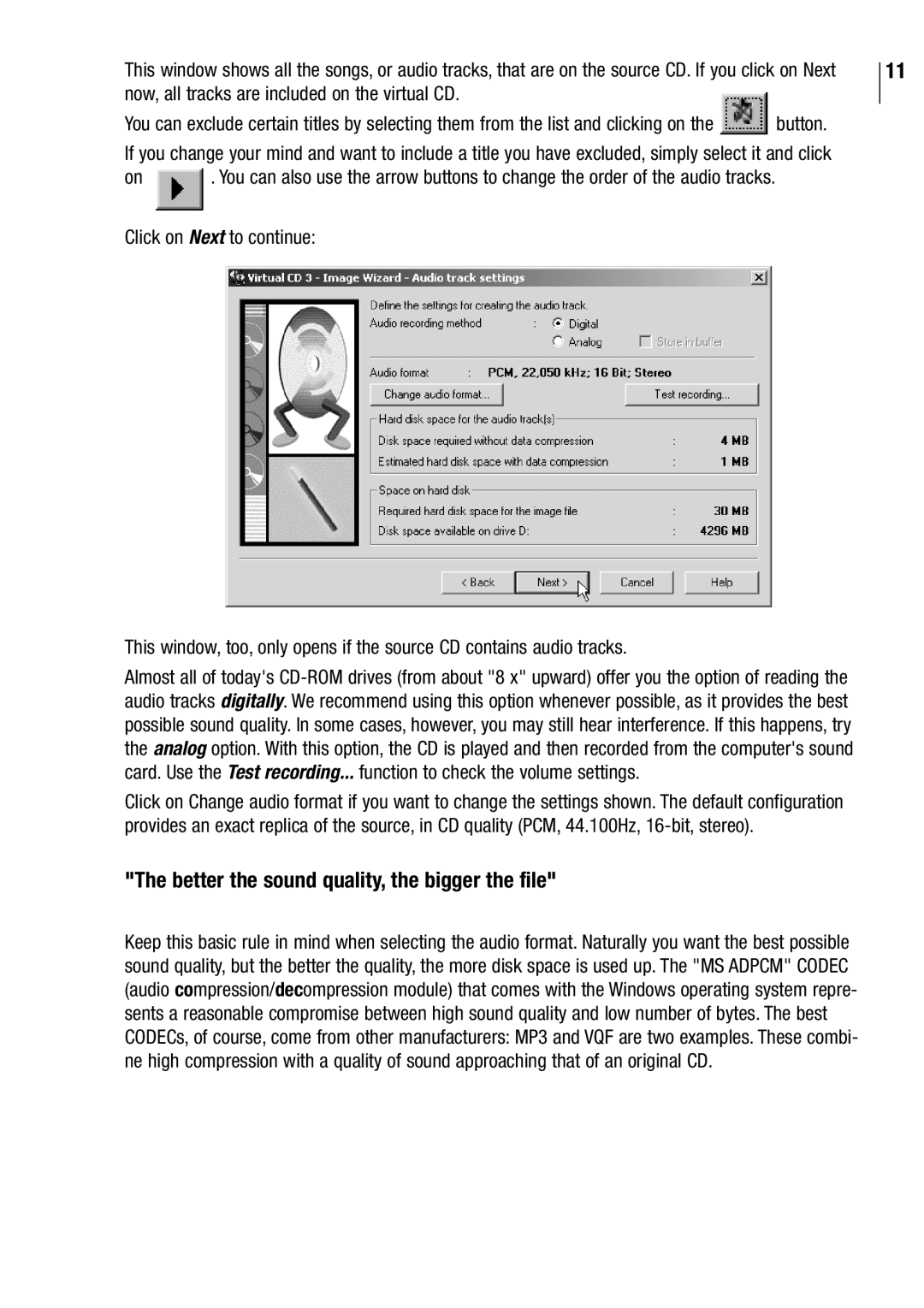
This window shows all the songs, or audio tracks, that are on the source CD. If you click on Next now, all tracks are included on the virtual CD.
You can exclude certain titles by selecting them from the list and clicking on the | button. |
If you change your mind and want to include a title you have excluded, simply select it and click
on ![]() . You can also use the arrow buttons to change the order of the audio tracks.
. You can also use the arrow buttons to change the order of the audio tracks.
Click on Next to continue:
This window, too, only opens if the source CD contains audio tracks.
Almost all of today's
Click on Change audio format if you want to change the settings shown. The default configuration provides an exact replica of the source, in CD quality (PCM, 44.100Hz,
"The better the sound quality, the bigger the file"
Keep this basic rule in mind when selecting the audio format. Naturally you want the best possible sound quality, but the better the quality, the more disk space is used up. The "MS ADPCM" CODEC (audio compression/decompression module) that comes with the Windows operating system repre- sents a reasonable compromise between high sound quality and low number of bytes. The best CODECs, of course, come from other manufacturers: MP3 and VQF are two examples. These combi- ne high compression with a quality of sound approaching that of an original CD.
11
